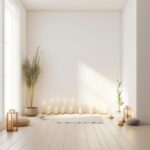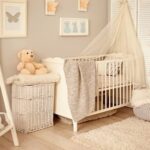The concept of open floor plans has gained immense popularity in modern home design, offering a seamless flow between living, dining, and kitchen areas. With this popularity comes the challenge of planning decor in such a vast and interconnected space. In this article, we will explore how to plan decor in an open concept home, addressing the unique considerations and opportunities that come with this type of layout.
Open concept homes have become a preferred choice for many homeowners due to their inviting and spacious feel. However, decorating these spaces can be quite daunting as it requires a thoughtful approach to ensure cohesion and functionality across different zones. Understanding the layout and flow of an open concept home is crucial in making informed decor decisions that enhance the overall aesthetic while maintaining practicality.
Defining distinct zones within an open concept space is essential for creating a sense of purpose and organization. In this article, we will delve into the importance of delineating specific areas within an open floor plan and provide valuable tips on using decor to achieve this effectively. From understanding the space to incorporating visual continuity, we will guide you through every step of planning decor in your open concept home.
Understanding the Space
When it comes to planning decor in an open concept home, it’s crucial to understand the space and its different areas. In an open concept layout, you typically have a seamless flow between the living area, dining area, and kitchen. Understanding how these spaces connect and interact with each other is essential in creating a cohesive and well-designed decor scheme.
To break it down further, here are the different areas within an open concept home:
- Living Area: This is where you might have your sofa, entertainment center, and other seating arrangements.
- Dining Area: This space is designated for dining furniture such as a table and chairs.
- Kitchen: The kitchen area often includes countertops, cabinets, appliances, and sometimes an island or breakfast bar.
Understanding the flow and connectivity between these spaces is key to planning decor that not only looks good but also functions well within the larger space. By defining each zone with decor, you can create visual boundaries while maintaining an open feel throughout the entire area.
To create a cohesive look in an open concept home, consider the following:
- Use area rugs to define specific zones within the larger space.
- Select furniture that complements each other across different areas.
- Incorporate elements of design such as lighting and wall art to tie all areas together aesthetically.
By understanding how these spaces come together in an open concept home, you can plan your decor effectively to maximize both style and functionality.
Defining Zones
Creating distinct zones within an open concept home is essential for maximizing the functionality and aesthetics of the space. Without clearly defined areas, an open concept layout can feel chaotic and disorganized. Here are some tips and ideas for defining each zone with decor:
1. Use area rugs: Placing area rugs in different sections of the open concept space can visually separate the living area from the dining area or kitchen. Choose rugs that coordinate with each other to create a cohesive look throughout the space.
2. Utilize furniture placement: Strategically arranging furniture can help define specific zones within the open concept layout. For example, positioning a sofa and coffee table in a way that creates a “living room” area within the larger space can effectively delineate this zone.
3. Incorporate lighting: Lighting plays a crucial role in defining different areas within an open concept home. Use pendant lights over the dining table, floor lamps in the living area, and under-cabinet lighting in the kitchen to establish distinct zones and create visual interest.
Incorporating these elements into your decor plan will not only define each zone within your open concept home but also contribute to a cohesive and harmonious overall design. By following these tips, you can successfully navigate how to plan decor in an open concept home while making the most of its flexibility and potential for creativity.
Choosing a Color Scheme
When it comes to planning decor in an open concept home, one of the most important considerations is the color scheme. The impact of color in such a space cannot be understated, as it sets the tone for the entire area and plays a significant role in creating visual continuity. A cohesive color scheme can help tie different areas together while still allowing each zone to maintain its distinct identity.
To begin planning your color scheme, consider the overall vibe you want to achieve in your open concept home. Do you prefer a tranquil and calming atmosphere, or are you aiming for a more lively and vibrant feel?
Once you have identified the mood you want to create, you can start selecting colors that contribute to that ambiance. Keep in mind that while each zone within an open concept home can have its own color palette, there should be an overarching theme that ties everything together.
When choosing colors for your open concept space, think about how they will interact with one another. Consider using varying shades of the same hue or complementary colors to create harmony throughout the space.
It’s also important to pay attention to natural light and how it affects the way colors appear in different areas of your home. By carefully selecting a well-thought-out color scheme, you can enhance the visual appeal of your open concept home while maintaining a sense of cohesion.
In addition, incorporating pops of accent colors can add interest and personality to your decor. These accent hues can be used strategically to highlight specific features or areas within your open concept space.
Whether through artwork, textiles, or decorative accessories, accent colors can inject energy and excitement into your overall color scheme. By thoughtfully considering your color choices and their interactions within an open concept home, you can create a cohesive and visually appealing environment that reflects your personal style and enhances the flow between different zones within the space.
Furniture Placement
When it comes to planning decor in an open concept home, furniture placement plays a crucial role in defining each zone while maintaining a sense of continuity and flow throughout the entire space. One key aspect to consider is the arrangement of furniture to ensure that it effectively separates different areas like the living room, dining area, and kitchen without creating visual barriers.
To achieve this, start by defining the function of each zone within the open concept space. The living area may be designated for relaxation and entertainment, the dining area for gatherings and meals, and the kitchen for cooking and socializing. Once these functions are established, select furniture pieces that not only fulfill their respective purposes but also contribute to an overall cohesive look.
In addition to functionality, consider the scale and proportion of furniture in relation to the size and layout of the space as a whole. Oversized or bulky furniture may overwhelm a smaller open concept area, while too many small pieces can create visual clutter. Finding a balance in scale will help ensure that each zone feels well-defined yet harmonious with the rest of the space.
Furthermore, keep in mind that traffic flow is essential in an open concept home, so place furniture in a way that allows for easy movement between areas without disrupting the overall openness. This can be achieved by leaving adequate space between pieces and avoiding layouts that block natural pathways within the space.
By carefully planning and arranging furniture in an open concept home, you can create distinct zones while maintaining a seamless flow between them – ultimately striking a balance between functionality and aesthetic appeal.
| Furniture Placement Tips | Considerations |
|---|---|
| Define function of each zone | Ensure that furniture fulfills intended purposes |
| Balance scale and proportion | Avoid overwhelming or cluttered appearance |
| Facilitate traffic flow | Arrange furniture to allow for easy movement between areas |
Designing for Functionality
In an open concept home, the design of decor must not only focus on aesthetics but also on functionality. With a multi-functional space that encompasses the living area, dining area, and kitchen, it’s important to ensure that the decor serves a purpose beyond just looking good. This section will provide insights on how to plan decor in an open concept home with functionality in mind.
The Role of Multi-Functional Furniture
One of the key ways to design for functionality in an open concept space is by incorporating multi-functional furniture. For example, a coffee table with built-in storage can help keep the living area tidy, while also serving as a functional piece of furniture.
Similarly, kitchen islands with seating can serve as both a casual dining area and extra counter space for food preparation. By choosing furniture that serves multiple purposes, you can maximize the usability of the space without compromising on style.
Strategic Storage Solutions
In an open concept home, clutter can quickly become overwhelming if not properly managed. It’s important to incorporate strategic storage solutions into the decor plan to maintain a clean and organized space. This could include built-in shelving units that seamlessly blend into the design of the home or stylish storage baskets that not only add to the aesthetic but also provide practical storage for items like throw blankets or magazines.
Dual-Purpose Decor Accents
When selecting decor accents for an open concept home, consider items that serve dual purposes. For example, decorative trays can be used as both stylish tabletop decor and functional serving trays when entertaining guests. Floor poufs or ottomans not only add visual interest but also serve as extra seating options when needed. By integrating decor accents that offer additional functionality, you can make the most out of every piece within your open concept space while adding your personal touch.
Planning decor in an open concept home requires careful consideration of how each element will contribute to both the aesthetics and functionality of the space. By selecting multi-functional furniture, incorporating strategic storage solutions, and opting for dual-purpose decor accents, you can create a cohesive and practical design scheme that enhances your open concept home.
Incorporating Visual Continuity
Creating visual continuity in an open concept home is essential for achieving a cohesive and harmonious look throughout the space. Without distinct walls to separate different areas, it’s important to use decor to tie everything together.
Utilize a Consistent Color Palette
One effective way to establish visual continuity in an open concept home is by using a consistent color palette. This doesn’t mean that every wall and piece of furniture needs to be the same color, but rather that there should be a sense of harmony and flow between the different areas. Consider carrying a particular accent color or material throughout the space to create a cohesive look.
Use Area Rugs as Anchors
Area rugs can also play a significant role in creating visual continuity in an open concept home. By strategically placing rugs in key areas, such as under the seating arrangement in the living area or beneath the dining set, you can visually define each zone while still maintaining an open feel. Additionally, choosing rugs with complementary patterns or colors can help tie different areas together.
Employ Consistent Design Elements
Another way to ensure visual continuity is by employing consistent design elements throughout the space. This could include using similar styles of lighting fixtures, coordinating window treatments, or incorporating recurring textures and materials. By implementing these consistent design elements, you can create a cohesive aesthetic that flows seamlessly from one area to another.
By incorporating these strategies for visual continuity, you can effectively plan decor in an open concept home to achieve a unified and inviting space that feels both connected and distinct.
Paying Attention to Scale and Proportion
In an open concept home, paying attention to scale and proportion is crucial when it comes to planning decor. With the lack of walls and defined boundaries, it’s important to ensure that the decor in each area complements the overall size and layout of the space. This section will delve into the significance of scale and proportion in an open concept home, as well as offer guidance on selecting decor that enhances the overall aesthetic.
When considering scale in an open concept home, it’s essential to take into account the size of the entire space as well as individual areas within it. Large, oversized furniture may overwhelm a small living area, while small, dainty pieces may feel lost in a large, expansive space. It’s important to strike a balance by choosing furniture and decor that is appropriately scaled for each zone within the open concept home.
Proportion is also key in ensuring that the decor in an open concept space looks cohesive and harmonious. Elements such as lighting fixtures, artwork, and decorative accents should be chosen with attention to their relationship with one another and with the surrounding spaces. For example, statement light fixtures can help define different zones within an open concept home while maintaining visual continuity throughout.
Ultimately, understanding scale and proportion will allow homeowners to create a balanced and visually appealing space that feels unified yet distinct in its various areas. By carefully selecting decor that complements the size and layout of the open concept home, individuals can fully realize the potential of this type of living space for both functionality and aesthetic appeal.
Conclusion
In conclusion, planning decor in an open concept home can be both challenging and exciting. The growing popularity of open concept homes has prompted homeowners to think creatively about how to define different zones within one cohesive space. Understanding the layout and flow of the space is essential in creating a harmonious decor plan that ties everything together.
When defining zones within an open concept home, it’s important to consider the purpose of each area and how they will connect with one another. By choosing a cohesive color scheme, arranging furniture strategically, and incorporating decor that serves a functional purpose, homeowners can create a space that feels interconnected yet distinct. Visual continuity and attention to scale and proportion are also crucial in achieving a well-planned decor scheme in an open concept home.
Ultimately, embracing the flexibility and potential of open concept spaces allows for endless possibilities when it comes to decor. By following the tips and ideas provided in this article, homeowners can confidently plan their decor in an open concept home, creating a space that is not only visually appealing but also functional and seamless. With thoughtful consideration and planning, an open concept home can truly become a showcase for personalized style and creativity.
Frequently Asked Questions
How to Decorate an Open Concept House?
Decorating an open concept house requires defining separate areas while maintaining a cohesive design. Consider using area rugs, different lighting, and strategically placed furniture to delineate spaces such as the living room, dining area, and kitchen.
How Do You Arrange Furniture in an Open Concept Floor Plan?
When arranging furniture in an open concept floor plan, it’s important to create designated zones for specific activities while maintaining flow. Consider using furniture arrangement to create natural pathways and maintain sight lines, and choose appropriately sized pieces that fit the scale of the space.
How Do You Decorate a Large Wall in an Open Floor Plan?
Decorating a large wall in an open floor plan can be a great opportunity to make a statement. Consider using oversized art or mirrors to fill the space without overwhelming it. Alternatively, you could create a gallery wall with smaller pieces or opt for large-scale decorative items like tapestries or clocks.

I’m thrilled to be your companion on this exciting journey through the world of home decor and design. With a passion for turning houses into homes and a keen eye for the finer details, I’m here to help you transform your living spaces into beautiful, functional, and meaningful havens.





